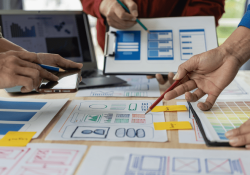Attending a large conference often leaves me excited and overwhelmed all at once. A couple of years ago I realized that I needed a better post-conference routine and plan because I just wasn’t making the most out of my conference experience when I returned to my school district.
I spent days learning so many new ideas, meeting new people, and making connections with colleagues from all over the nation. I would typically leave conferences feeling excited to implement new ideas and motivated by all of the inspiring people I had a chance to interact with! Then it would hit – post-conference paralysis! Where do I start? How do I put these ideas into action? What do I do first? Then all of the “while you were away” messages in my inbox needed to be responded to. The hustle and bustle of the school year continued on and it would be weeks or months before I got back around to making a plan for how to actually implement my new learning!
I realized I needed a better post-conference planning process. I decided I need to commit to several important steps when leaving the conference and thanks to Learning Forwards’ Conference Action Toolkit, there are some helpful tools and templates that can assist with these steps! Here are my tips for avoiding post-conference action planning paralysis!
Here are five tips that will help you have a better post-conference routine and plan by @JillGeocaris. #LearnFwd20 Share on XTip #1: Schedule time for post-conference planning
This is the first tip because it is the most important one. In order to ensure we implement our new learning, we must make time to plan to do so. I typically schedule time on the last day of the conference or the first day back in my district to do this. If I traveled a greater distance to the conference, I will often use my flight time to work on this while traveling home. During this time, I go through the process that is outlined in the remaining tips.
Tip #2: Organize your notes and resources
Link the notes and resources that are directly connected to your work to the agendas for those projects so that you can share them with team members at your next meeting. Organize any other notes and resources in a filing system that makes the most sense for those topics. I always keep a copy of everything in a file that is labeled with the title and date of the conference. I also make sure that this file includes a document on which I record any new people I met and their contact information – I simply cannot be trusted to keep track of business cards these days!
Tip #3: Identify major takeaways
In reviewing your session notes, identify the one or two major takeaways from the conference that you want to take action on. I like to go into the conference with an area of focus that I am trying to learn about – so my major takeaways are usually focused on that area that I planned my conference experience around.
Tip #4: Create a 30- 60- 90-day plan
For each major takeaway that you want to address in your district, write down what you hope to accomplish in 30, 60, and 90 days. This helps me to identify what I am hoping to accomplish in the long run and what my overarching goal(s) should be.
Tip #5: Create an action plan
Use Learning Forward’s Action Planning Template to create your action plan. This template helps you to write a goal for each major takeaway and action steps you can take towards that goal.
Attending a major conference does not need to leave you feeling overwhelmed or paralyzed! By taking time to organize your learning, set goals, and plan action steps you can ensure that your Learning Forward Conference experience can have the greatest impact on those you serve in your school community!








